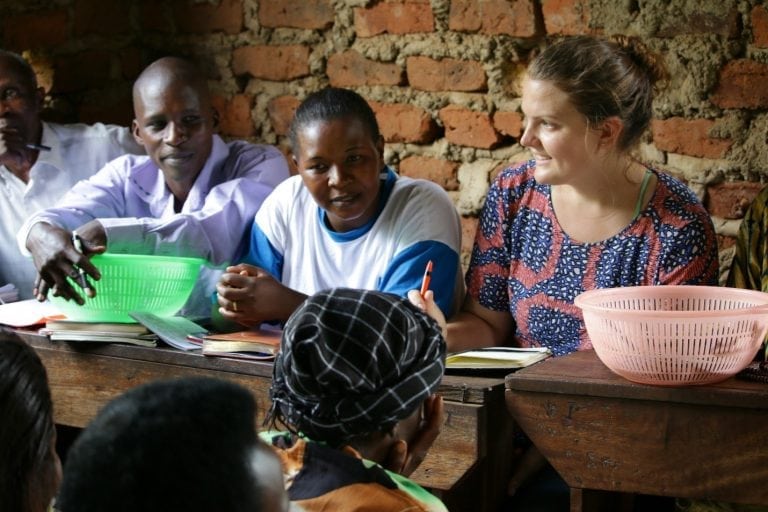New technologies in the development sector can often solve big problems. Whether it is a latrine that is able to produce manure or a new household water treatment solution, technology can often be at the forefront of improving lives. However, without the institutional capacity to support, maintain, and manage these technologies, big problems can grow in both size and complexity: A latrine needs to be regularly serviced and maintained, and community members need to know how to use it. A household water treatment system needs to be understood and continually used to have impact, and communities need to be motivated and supported to continue using it.
With the most marginalized and vulnerable communities being the ones without access to safe water, it is critical that when a service becomes available, it lasts forever.
This supporting environment and institutional capacity is especially important when discussing rural water supply, a vital basic service. With the most marginalized and vulnerable communities being the ones without access to safe water, it is critical that when a service becomes available, it lasts forever. Local service authorities like government and community level committees are mandated to coordinate and manage development initiatives, but can’t just react to new pieces of infrastructure or technology that find their way into their jurisdiction. When introducing new technology, it’s important to consider how it will interact with the systems around it.
1. Spare parts supply chains play a critical role in ensuring lasting services, because eventually everything will break. Latrines might need small structural repairs to the roof after a particularly windy season. Solar panels might need a connecting wire replaced after getting caught in the mouth of a roaming dog, and a non-functional water pump is the classic example of issues that arise when spare parts are not available.
Don’t just drop a new piece of equipment and leave. Build a supporting environment as a component of the initiative and impact itself.
2. The existing knowledge base on that technology will be weaker than for an existing technology, and maintenance services will be difficult to contract when they are needed. Training these private sector maintenance and repair services are a crucial aspect of ensuring lasting services.
3. New technologies often take time to roll out to scale, if they ever even do. In the interim, there will be inconsistency in the type or quality of services available. This creates challenges not only for management structures and governance systems for a particular technology, but can also cause strain on relationships between neighbors who might be benefiting differently from this work. Using a new water point technology as an example, neighboring villages could no longer support each other to manage their water point through the same methods of fundraising, preventative maintenance, and interaction with mechanics and government. Sometimes, there might even be jealousy between communities, which can not only degrade the social fabric but also demotivate the communities not benefiting from this new technology, and can work against previous development successes.
Although technologies on their own can have great impact, it is the suite of services associated with those technologies that ensure the impact can be long-lasting. This supporting environment includes a strong government presence and management structure, involvement and ownership from community level beneficiaries, and necessitates a commitment from NGOs and development partners to not just drop a new piece of equipment and leave, but to build the supporting environment as a component of the initiative and impact itself.
Genevieve Hughes works for Engineers Without Borders Canada in Malawi, tackling governance issues in the water sector. She is currently facilitating the transition strategy of a WaterAid Malawi project in the district of Salima, and is examining how projects can improve sustainability through better design and collaboration with local government structures.


Great contribution. strategy is worth replicating in other countries.